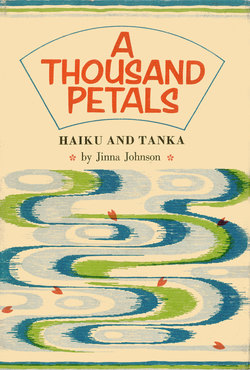Читать книгу Thousand Petals - Jinna Johnson - Страница 7
На сайте Литреса книга снята с продажи.
ОглавлениеPreface
My delight in the two forms of Japanese poetry called tanka and haiku stems from their ability to convey the warmth and color of small thoughts with a sensitive awareness of life's common, everyday objects and occurrences.
There is little doubt that the poetic spirit is deeply felt by the Japanese people at large, who compose poems at all ages and in all walks of life, whenever there is a moment extra, either alone or at gatherings of two or more persons. They even compose poems for a yearly contest decreed by the emperor. Poetry has provided a source of relaxation to all who read it, and the artistic Japanese have developed through these poems a unique aesthetic pleasure by fusing a subtle transference of thought with an emotional experience.
A formal plot is unnecessary for these two poetic forms. The tone is usually that of mild humor and gentle melancholy created around a central image by the use of small details. For instance, the perfume of a flower or the stirring of the wind may be mentioned, resulting in a nucleus from which innumerable pictures can be evolved. The interpretations are made by the reader, who also has the pleasure of forming the picture as a whole because of the elusive ending. Thus a total theme can be recognized. There is an instinctive reluctance to say the obvious, and the unexpressed is understood as well as the expressed. Emotion is smoothed away and is considered indecorous. Very few poems are written in an indignant vein or contain religious fervor, and few touch on ethics. This leaves a limited variety of subjects, of which nature predominates. Rhyme is avoided and poetry reduced to the formal rule of the number of syllables used. Tanka have thirty-one syllables, divided into five lines of 5-7-5-7-7 syllables. Haiku are composed of seventeen syllables, three lines in the order of 5-7-5 syllables, and are comparatively new, having been derived from tanka in the late 1600's.
